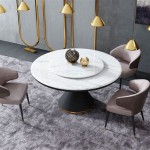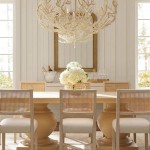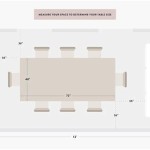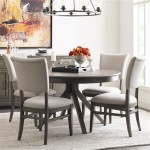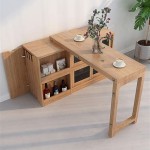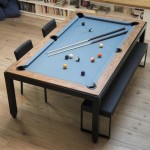Glass Dining Table With Marble Base: A Study in Elegance and Durability
The glass dining table with a marble base represents a sophisticated fusion of modern design and classic materials. This furniture piece offers a unique aesthetic, blending the transparency and lightness of glass with the solidity and luxurious appeal of marble. It is a statement piece capable of elevating the dining experience and enhancing the overall ambiance of a space.
Understanding the components, design considerations, and maintenance requirements of these tables is essential for making an informed purchasing decision. Individuals considering this type of dining table should evaluate its suitability for their specific needs and lifestyle, considering factors such as space constraints, design preferences, and budget.
The Allure of Glass and Marble: A Material Pairing
The primary appeal of a glass dining table with a marble base lies in the inherent characteristics of its constituent materials. Glass provides a smooth, transparent surface that allows light to pass through, creating an airy and open feel in the dining area. It can visually expand a room, making it suitable for smaller spaces. Furthermore, the sleekness of glass complements various design styles, lending itself well to both modern and minimalist interiors.
Marble, on the other hand, is renowned for its timeless elegance and natural beauty. Its unique veining patterns and inherent variations make each piece distinct. The cool touch and substantial weight of marble contribute to a sense of luxury and permanence. As a base material, marble provides stability and grounding to the table, contrasting with the lightness of the glass top.
The contrast between these materials creates a visually striking effect. The transparency of the glass allows the beauty of the marble base to be fully appreciated, showcasing its intricate patterns and texture. This combination of visual lightness and perceived weight creates a harmonious balance that is both aesthetically pleasing and functionally sound.
Different types of glass can be used for the tabletop, including tempered glass, which is heat-treated to increase its strength and durability. Tempered glass is significantly more resistant to breakage than standard glass and shatters into small, relatively harmless pieces if it does break, making it a safer option for dining tables. The thickness of the glass also plays a role in its durability and load-bearing capacity. Thicker glass is generally more resistant to scratching and chipping.
Similarly, various types of marble are available for the base, each with its own distinct color, veining, and characteristics. Carrara marble, known for its white background and subtle gray veining, is a classic choice. Calacatta marble, with its bolder and more dramatic veining against a white background, offers a more luxurious and eye-catching appeal. Other marble options, such as Nero Marquina (black marble) or Emperador (brown marble), can provide a contrasting and dramatic aesthetic.
The selection of specific glass and marble types will significantly impact the overall look and feel of the table. Carefully considering the color, texture, and pattern of each material is crucial to achieving the desired aesthetic.
Design Considerations: Style, Size, and Shape
The design of a glass dining table with a marble base involves careful consideration of style, size, and shape to ensure it complements the surrounding decor and meets the functional needs of the user. The style of the table should align with the overall aesthetic of the dining area, whether it is modern, traditional, minimalist, or eclectic.
For modern interiors, a simple and streamlined design with clean lines and a minimalist marble base may be preferred. A circular or rectangular glass top can contribute to a contemporary feel. In more traditional settings, a more ornate marble base with intricate carvings or detailing may be appropriate. An oval or rectangular glass top can complement the traditional aesthetic.
The size of the table is dictated by the available space and the number of people it needs to accommodate. It’s crucial to measure the dining area accurately and consider the amount of space needed for chairs and movement around the table. A table that is too large can overwhelm a small space, while a table that is too small may not comfortably seat everyone.
Standard dining table sizes typically accommodate between four and eight people. For larger gatherings, extendable tables or multiple smaller tables can be used. The shape of the glass top also plays a role in the table's functionality and aesthetic.
Round tables promote conversation and create a more intimate dining experience. They are also space-efficient, as they don't have sharp corners. However, round tables may not be ideal for larger groups or rectangular rooms, as they can feel less structured.
Rectangular tables are the most common and versatile shape for dining tables. They provide ample surface area for food and tableware and can comfortably seat larger groups. Rectangular tables are well-suited for rectangular rooms and can be easily arranged to fit different seating configurations.
Oval tables offer a softer and more elegant alternative to rectangular tables. They combine the benefits of both round and rectangular tables, providing ample surface area while promoting conversation and creating a more visually appealing shape. Square tables are suitable for smaller dining areas and can create a more intimate and balanced feel.
The shape of the marble base should also complement the shape of the glass top. A round glass top would typically be paired with a round or pedestal-style marble base, while a rectangular glass top would be best suited to a rectangular or trestle-style marble base. The proportions of the base should be carefully considered to ensure it provides adequate support for the glass top without being visually overpowering.
Maintenance and Care: Preserving Beauty and Longevity
Maintaining the beauty and longevity of a glass dining table with a marble base requires consistent care and attention. Both glass and marble are porous materials that can be susceptible to staining and damage if not properly protected. Regular cleaning and preventative measures are essential for preserving the table's pristine appearance.
Cleaning the glass top should be done regularly with a mild glass cleaner and a soft, lint-free cloth. Avoid using abrasive cleaners or scouring pads, as they can scratch the glass surface. Stubborn stains can be removed with a solution of vinegar and water. It is important to wipe the glass dry after cleaning to prevent water spots.
The marble base requires more specialized care. Marble is a relatively soft and porous stone that is susceptible to staining from spills and acidic substances. It is crucial to seal the marble surface regularly with a high-quality marble sealant to protect it from stains. The frequency of sealing will depend on the type of marble and the level of use, but generally, it should be done every six to twelve months.
Spills should be cleaned up immediately with a soft, damp cloth. Avoid using harsh chemicals or abrasive cleaners on the marble, as they can damage the surface. For stubborn stains, a poultice made from baking soda and water can be applied to the affected area and left to sit for several hours before being rinsed off.
Protecting the marble surface from scratches is also important. Use coasters and placemats to prevent scratches from dishes and glassware. Avoid placing heavy or sharp objects directly on the marble surface. Dust and debris should be removed regularly with a soft cloth or brush to prevent them from scratching the surface.
In addition to regular cleaning and sealing, consider using a marble polishing compound to restore the shine and luster of the marble base. Follow the manufacturer's instructions carefully when using polishing compounds. Professional marble restoration services can be employed for more serious damage or staining.
Properly maintaining a glass dining table with a marble base ensures that it remains a beautiful and functional centerpiece in the dining area for years to come. Consistent care and preventative measures are essential for preserving the table's elegant appearance and protecting its valuable materials.
Ultimately, the selection and care of a glass dining table with a marble base require an understanding of the materials involved, the design principles guiding its aesthetics, and the maintenance practices that ensure its longevity. By considering these factors, individuals can make an informed decision and enjoy the elegance and durability of this remarkable furniture piece.

Modern Dining Room Furniture Glass Top Marble Base Table From China Stonecontact Com

Postmodern Stone Marble Dining Table With Brass Base And Glass Top 1980s For At Pamono

T5 Stone Glass Dining Table

Wavy Marble Base Dining Table With Glass Top

Luxurious Rectangle Shaped Glass Top Dining Table

Round Glass Dining Table With Black Marble Base

Casabianca Tower Stainless Steel Clear Glass Extendable Dining Table

Dining Table With Stone Base And Smoked Glass Top 1970s

Modern Faux Marble Dining Table For 4 6 People With 0 Tempered Glass Tabletop And Mdf Oc Shaped Bracket Silver Metal Base Large Rectangular Kitchen Living Meeting Room

Contemporary Dining Table Thinkglass Glass Wooden Base Marble

